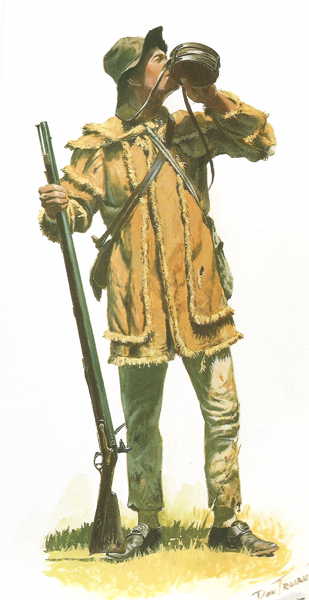When Congress passed the Pension Act of 1832, for veterans of the Revolutionary War, they could not have known what a boon it would become to future genealogists. The narratives included in these pension applications (maintained by the National Archives in a single searchable collection) are a rich source of information about the men who served in the armed forces (or their widows, depending on who applied), and always seem to include unexpected details. One such applicant was our ancestor John Lewis Hickman, who was born in Oct 1761 in Cecil County, Maryland. His father Joseph Hickman (subject of a future post) moved the family to Rowan County, North Carolina when John was still a boy, and he grew up near the town of Salisbury, situated on the Great Wagon Road. This meant it was at the crossroads of trade for the entire region.

In 1780, at the age of 18, John was drafted into the Rowan County Militia for a six-month tour of duty, but he subsequently volunteered to extend his service. According to his federal pension application, “he is certain he never left the service until the month before Lord Cornwallis surrendered at Yorktown, which he thinks took place in Oct 1781.” This date is correct, so it probably means that he served for at least a year in the company commanded by Captain James Cole Mountflorence. We know very little about what he was asked to do during his tour, but he had three brothers (two older and one younger) who also served during this same time period. From their pension applications we gather a few more details that help us sketch a clearer picture of what service was like. We know that their Regiment was engaged in fighting and capturing “Tories,” or loyalists to the crown, and then marching them back to the jail at Salisbury. Soldiers were expected to help construct battlements such as digging trenches (there is mention of this activity on the banks of the Yadkin River which runs just north of Salisbury), and they also participated in the manufacture of ammunition for the armory.
It is this last detail, combined with the fact that they were operating in and around Salisbury (a known supply hub), and the fact that Captain Mountflorence would eventually be promoted to quartermaster general of the State of North Carolina, which suggests that many of the soldiers in this region were acting as part of the war machine’s supply chain. Their contributions meant that the troops engaged in the largest battles, being fought in nearby South Carolina, and to the north in Virginia, could rely on these units to provide them with vital supplies. And, as any military commander can attest, “beans, bullets, and band-aids” are essential to victory, so without these support units, the war could have easily been lost.
Shortly after the war, John married is wife Nancy Patton and then we know from census records (confirmed by his pension application) that he moved his family to Bourbon County, Kentucky in 1807, and then moved again a few years later near Russelville, Kentucky in Logan County, which is where John Lewis died in 1834. Sadly, there are no records of where he is buried.




Pingback: Finding Your Path – The Pipes Family Foundation